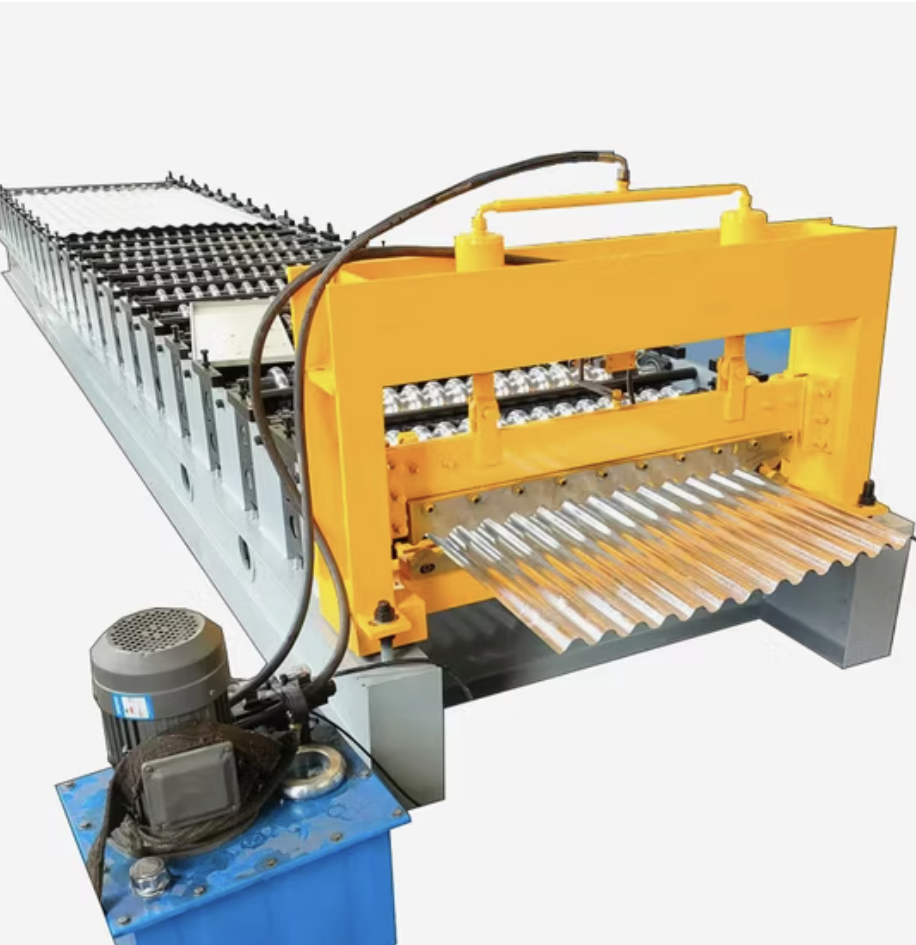To express an interest in this machine please submit the form below.

Not Sure What Machine You Need?
Select Your Profile, We'll Match It
Choose your desired profile drawing, and let Machine Matcher connect you with the best roll forming machine tailored to your needs.
Browse Profiles



Corrugated Roll Forming Machines are specialized equipment used to produce corrugated metal sheets, commonly used in construction for roofing and cladding purposes. This machine allows manufacturers to produce consistent, high-quality corrugated profiles efficiently and accurately. These machines are equipped with robust rollers and powerful motors, ensuring precise shaping of metal sheets into the desired corrugated pattern. The corrugated profile created by this machine is widely used in various industries due to its strength, durability, and lightweight nature.
A corrugated roll forming machine consists of several main components, including an uncoiler, roll forming unit, cutting system, and control system. The uncoiler holds the raw material (typically metal coils) and feeds it into the roll forming machine. The roll forming unit contains multiple rollers that progressively bend and shape the metal sheet into a corrugated profile. The cutting system then cuts the formed sheet to the required length, while the control system, usually PLC-based, ensures that the machine operates with precision and efficiency.
Here is a breakdown of the key specifications commonly found in a corrugated roll forming machine:
Corrugated profiles produced by these machines are known for their strength, lightweight nature, and water resistance. Corrugated metal sheets are widely used in roofing, wall cladding, and industrial sheds. The corrugation depth and pitch are customizable based on the roller design and material thickness, allowing manufacturers to create sheets that suit different environmental and structural needs.
Many manufacturers offer optional extras for corrugated roll forming machines to enhance efficiency, versatility, and safety:
The setup of a corrugated roll forming machine requires proper alignment of the rollers and calibration of the control system. Installation typically involves the following steps:
Maintenance of a corrugated roll forming machine includes regular lubrication of rollers, cleaning of the machine frame, and checking the hydraulic system and motor. Routine inspections and preventive maintenance ensure that the machine operates efficiently and prolongs its service life.
Q1: What materials can be used in a corrugated roll forming machine?
A: Common materials include galvanized steel, aluminum, pre-painted steel, and sometimes stainless steel. These materials are ideal for producing durable and weather-resistant profiles.
Q2: How do I determine the appropriate thickness of material for my application?
A: Material thickness depends on the intended use of the corrugated sheets. For roofing, 0.4mm to 0.6mm is common. For industrial applications, thicker sheets around 0.8mm to 1.2mm may be more suitable.
Q3: Can the machine be customized to produce different corrugation depths and widths?
A: Yes, the machine can be customized with specific roller designs to achieve various corrugation depths and widths. This is typically discussed with the manufacturer based on the user’s application requirements.
Q4: What factors impact the production speed of a corrugated roll forming machine?
A: Production speed is influenced by the motor power, material thickness, and type of control system. Higher-powered motors and efficient PLC systems enable faster speeds, though thicker materials may slow the process.
Q5: How long does it take to install a corrugated roll forming machine?
A: Installation typically takes between one to three days, depending on the machine’s complexity, factory setup, and available technical support.
Q6: What type of maintenance does this machine require?
A: Regular lubrication of moving parts, inspection of the hydraulic system, and cleaning of the roller surface and machine frame are essential. Monthly maintenance checks help prevent downtime and ensure optimal performance.
Q7: How is the machine controlled, and can it be automated?
A: Most corrugated roll forming machines are controlled by a PLC system, allowing full automation of the cutting length, profile quantity, and speed. Remote PLC control options are also available for enhanced functionality.
Q8: Is it possible to add additional accessories to the machine after purchase?
A: Yes, most manufacturers offer compatible accessories such as automatic stackers or coil handling systems that can be added to an existing setup.
Copyright 2026 © Machine Matcher.